Dragon Elephant Dance VS Dragon Elephant Fight?| China, India's comparative political economics
Author:Economic Observer Time:2022.09.26
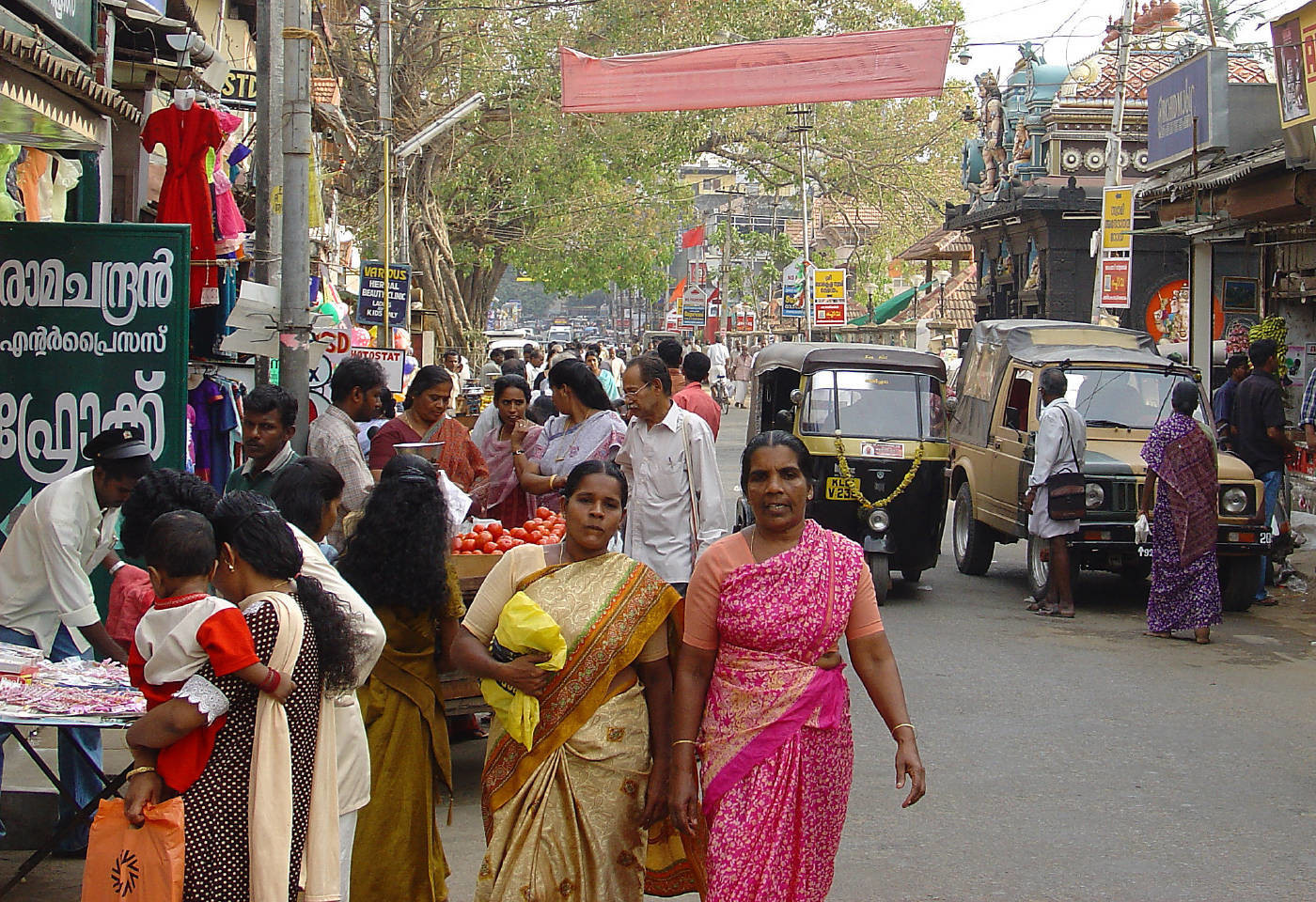
Liu Jun/Wen
In the past two decades, the Indian economy has later lived up and "made in India" that may have replaced "Made in China". In recent years, with the intensification of the Sino -US trade war and the strengthening of the United States' balance and curbing China, the trend of decompostering between China and the world economy has become increasingly concerned. "Made in India" replaces "Made in China" and "Indian Elephant" replaces the "Chinese Dragon", which seems to have become more and more realistic.
What is the state of political and economic development in China and India? Is it "dragon elephant dance" or "dragon elephant fight"? Based on the important achievements of the political and economic comparative research in China and India in recent years, we have conducted an overview of the history and current status, potential and prospects, problems and challenges of China -India's political and economic development.
one
The Indian economy occupies an important position in the world. Based on purchasing power parity and exchange rates, India's economic scale ranks third and sixth in the world (data in 2017), and is one of the fastest growing economies in the world's major major countries. Since the financial crisis from 2008-2009, India's economic growth contribution to global growth is second only to China and the United States, and has become one of the countries that attract foreign investment the most.
From independence in 1947 to the early 1980s, India's economy maintained an overall growth, but it was plagued by "Indian growth rate". During this period, India's economic growth rate fluctuated greatly, with a fluctuation range of -8%to 9%. During this period, the average growth rate of GDP was only 3.5%, and the per capita GDP growth rate was only 1.5%. In the 1980s, under the guidance of preliminary economic reform policies, the Indian economy had grown for 10 consecutive years and ended in the 1991 international income and expenditure crisis.
In 1991, the Lao government came to power in the economic crisis and began the process of "reform and opening up" in India. With the goals of globalization, liberalization, marketization and privatization, India has promoted economic reforms, adjusted industrial policies, promoted an open economy, gradually opened up domestic markets, and implemented foreign economic cooperation.
With the rise of the globalization of the world economy and the rise of the knowledge economy, the Indian government is committed to developing the service industry economy. In 2000, Indian Prime Minister Warga Pay put forward the idea of making India a "big country", trying to seize the opportunity of human resources in the "new economy" era, making India a worldwide knowledge economy for outsourcing services to provide outsourcing services Great country. India's IT software industry, medicine and biotechnology industry has developed greatly. In 2004, after India's "Father of Economic Reform" Singh, India was committed to promoting the development of knowledge -intensive high -end service industries along new technologies such as nano technology and artificial intelligence. In 2014, Indian Prime Minister Modi proposed the "Indian Manufacturing Plan". The international community's views on "Made in China" will gradually receive attention.
Today's economic development of India rely more on the service industry rather than manufacturing, dependence on domestic markets rather than foreign trade exports, relying on consumption rather than investing, and relying on high -end technology products instead of sticking licensee. India is known as the "Indian Brain" and "World Office", and has become a model for the economic model of serving the industry in developing countries.
two
For more than 30 years, accompanied by the reality of economic development in China and India, the research on political and economic comparatives in China and India has also been a hot spot for academic circles.
In the "India: Economic Development and Social Opportunities" in Indian economist Amitia Mori, an in -depth analysis of the economic development process of China and India.
Mori pointed out that India's economic reform in 1991 focused on the open economy and expanding markets, but lack of fundamental changes in social policies, including basic education and basic medical security, is a major defect. When China, South Korea and other East Asian economies are undergoing major economic changes, they have done much better than India in terms of social opportunities.
Mori praised the historic achievements of China's economic development and reform. He believes that China is similar to India's fate, and once poverty and unfortunately. The way China seeks social change and transformation, how far has a far -reaching impact on India. China's policy reform in 1978 and the integration of the world economy has also received widespread response in India. China's achievements have made great contributions to the performance after the reform in education, health care, land reform and social changes. Economic development provides support.
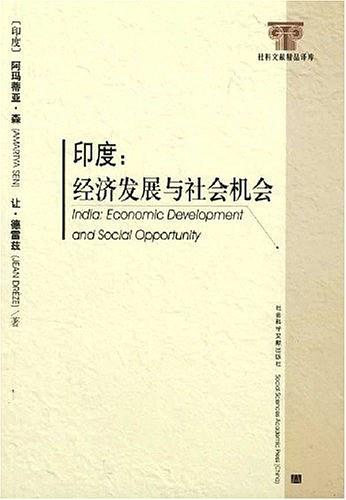
"India: Economic Development and Social Opportunities"
[India] Amitia Sen /
Social Science Literature Press
December 2006
However, Mori also pointed out that learning from China should also pay attention to analyzing its "negative experience", and India must learn from China identified.
In the "Awakening Pot Foot Giant: Sino -Indian Economic Rise Evaluation", Hindu Economist, the University of California, Berkeley California, also analyzed the economic reform and economic growth model of China and India, revealing two Many structural and institutional issues are facing national economic development.
Badan pointed out that compared to India, China's economic growth has achieved great achievements; and India's democratic system may also hinder economic development. A fundamental conflict of the Indian democratic system is that the folk logic threatens democratic governance. In India, any controversial and important decisions must go through a lot of debates, incitement, street turmoil and conflict. After amazing delay, the results obtained are often imperfect compromises. In India, if a large number of poor people are in a unique constituency, they will not always successfully allow politicians to implement government plans to reduce poverty, or provide basic social services such as education and medical care. Social and economic inequality such as India and diversifying conflicts are difficult to organize collective actions to promote long -term continuous changes, and at the same time bring populist obstacles to long -term investment -and such long -term investment can be Relieve the serious deficiencies of Indian infrastructure. This competitive populism, through short -term catering and alms to win elections, will hurt long -term investment, especially the investment of material infrastructure, which is the bottleneck of India's economic development.
At the same time, Badan also pointed out that this chaos and compromise have strengthened the legitimacy of the weak and incompetent Indian administrative authorities to a certain extent. The tolerance for diversification and objection is the safety valve of India, an extremely heterogeneous society. India's democratic system is also facing greater pressure, allowing the people to enjoy the benefits of development, reduce the damage caused by turbulence, and make development more sustainable. At the same time, India's democracy also provides greater space for the collective operations of against capital atrocities and industrialized by -products. In addition, democracy also provides more political opportunities to alleviate social inequality.
Badan concluded that since the reform of China and India, China and India have done a good job in economic development since the reform, showing excellent adaptability, but we must pay attention to the structural fragility and social and politics that may hinder the future development of China and India. Determination. How difficult to predict the political and economic development prospects of the two countries still need to be observed.
three
Indian scholar Promes Shangka Jia "Crouching Tiger Hidden Dragon: Can China and India dominate the 21st century? "In the first place, the system compared the political and economic development of China's" reform and opening up "in comprehensive manner, and analyzed the challenges facing China and India in the 21st century. Although this is written in 2009, the arguments are novel and meticulous. Many conclusions are still inspiring.
In the deserves, Jia has reviewed the process of changing the economy of China and India from the instruction planned economy to the market economy. China began reform and opening up in 1978. India's reform was 13 years later than China. It only decided to abolish the instruction plan in 1991. The Ingragan administration had the idea of giving up the instruction planning economy as early as 1980, but it was limited to India's special political and economic situation and failed to implement it.
However, Jia believes that both China and India are hesitant when reforming. After the reform of the reform, the Chinese government hurriedly closed to narrow a strong social response. In India, due to the domestic inflation and foreign exchange crisis from 1980-1981, India has forced India to go to reform.
"Crouching Tiger, Hidden Dragon: Can China and India dominate the 21st Century"
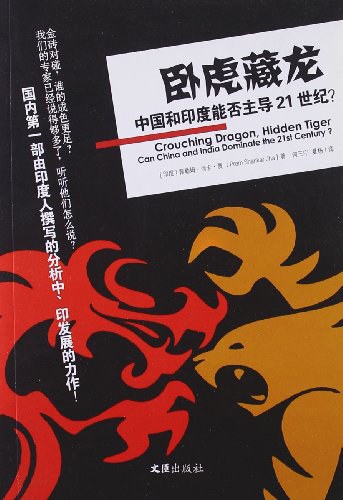
[India] Promic Shangka Jia /
Wenhui Press
December 2012
Jia pointed out that China -India's economic reforms have avoided shock therapy and chose a gradual reform path. Simply similarities in the development of China and India's political economy have also spread to the political field. China and India are trying to accelerate the pace of industrialization and economic development, but they all need to try their best to alleviate the impact and harm of the rapid development of industrialization on the poor, rely on the re -distribution pathway to achieve social justice, and try to use government taxes to provide security for the poor.
Judging from the existing research results, the economic development of China and India has both time and process similarities, but also the fundamental differences between structural and institutionality. As Jia summarized in his works, in the process of China's and India's rise, it is necessary to see that the two countries have experienced not only economic changes, but also political changes. This kind of political and economic changes have contradictions between successful and losers. The future of the two countries is full of variables, and it is necessary to successfully coordinate the "interests of winners and losers".
Both China and India are aware of this demand. In Jia's opinion, China needs to establish a system that can fulfill this task. Although India has such a system, it needs to strengthen political will or governance capabilities to prevent the system from falling or degenerate and not fully exercise their duties. Now it seems to solve these problems correctly. To this day, both China and India are still a huge challenge.
Four
Indian scholar SANGARALILINGAMAMESH's 2017 book "The lesson to India" in China has comprehensively summarized the "experience and lessons" of China's economic development for India. comprehensive.
Ramesh pointed out that India has the oldest existing religion in the world, while China has the oldest existing civilization in the world. Prior to the rise of Britain, both countries ruled the known world through trade. A century later, both countries have experienced the transition from a planned economic system to a hybrid economy system. China began economic transformation in the late 1970s, and gradually started free market reforms in 1978. After India suffered a crisis of international income and expenditure in 1991, economic reforms officially started. After joining the World Trade Organization (WTO) in 2001, the Chinese economy began to take off. But in recent years, India's economic growth rate has begun to surpass China. [India] Sangaralinka Ramesh /Mot
Pargrav Publishing House
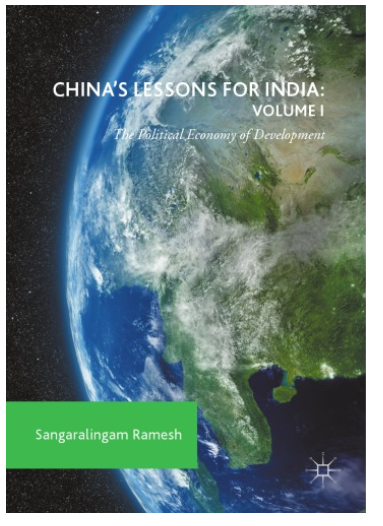
2017 edition
Lamesh believes that the Indian economy is facing many problems, some of which are left over during the colonial period, but the error policies of their leaders have expanded these problems after independence. Indian decision makers can benefit from the policies and strategies of Chinese decision makers to promote the rise of India as an economic, technical and final military superpower.
Lamesh pointed out in the first volume of "Development Political Economy" that after 1949, India's economic development was hindered by the unfavorable factors brought by British rule, and the central plan economy exacerbated this unfavorable factor. First, India's infrastructure is guided by serving the British economy. In other words, it is to facilitate raw materials from India to Britain. Secondly, the rule of Britain weakened India's entrepreneurial activities, so that it was not easy for future generations to discover entrepreneurship, at the micro -economic level. Third, the distribution of agricultural land is unfair, and there is a significant gap between the landlord and the small farmers. Fourth, the financial system is underdeveloped, and the usury is prevalent, leading to financial slavery. Finally, the political, cultural, society, and language classes inherited by India made the institutional rigidity in the system. The central plan, private investment control and economic license system have exacerbated these factors, leading to India's underdeveloped economy after independence in 1947.
Lamesh believes that after India's economic "reform and opening up" in 1991, India has made progress in imitating China's infrastructure development, but it still needs to overcome the rigidity of the system at the micro -economic level, promote the cultivation of entrepreneurs' spirit, and then economic change As a result, institutional change.
Lamesh's "How to learn Chinese experience in the Political Economics of Transformation" in the second volume of "Reform Economics" clearly states that India should focus on promoting the economy through infrastructure investment, promoting innovation, and promoting the entrepreneurial level of microeconomic levels to promote the economy Growth, and promoting the vitality, adaptability and flexibility of the promotion agency over time. Important policy suggestions are as follows.
(1) Increase efforts to promote entrepreneurship, especially among low surnames and women; (2) abolition of strict labor laws that make companies and entrepreneurs hire workers with high costs; (3) promote and strengthen equal legislation, strengthen giving women rights right , Reduce discrimination and make it contribute to economic growth; (4) increase the government's funding for research and development of universities and research institutions in order to carry out innovative projects; The horizontal connection between the company; (6) By strengthening the protection of intellectual property incentives, researchers can benefit from innovation. (7) Learn Chinese experience, designate Mencius, Qin Nai, and Kolkata as an open city, providing preferential economic and commercial policies for domestic and overseas companies; (8) The establishment of a special economic zone such as ports and other places will be funded by government funding infrastructure and preferential policies to attract foreign multinational companies to participate in the manufacturing industry; (9) Strengthen the improvement of all types of tangible infrastructure in India, as well as connecting India and its surrounding countries -especially China - — Infrastructure, integrate the Indian domestic market, India and neighboring countries.
In these policy suggestions, we see Ramesh's serious inspection and analysis of China's economic policy.
However, Lamesh observed that China's market integration is not balanced, and economic growth has led to increasing income gap between China's coastal areas and central and western regions. However, China's market integration to China's economic growth still exceeds the contribution of the EU market integration in the EU market through tariff alliance, single market, and formal alliance. Lamesh is optimistic that the population of China and India will increase up to 2.6 billion. If the two countries can form a single currency, unified laws and regulations, and freely flow -free zones for labor, the economy of the two countries will benefit from the unified market and consumer scale And China ’s economic development experience in the past forty years and India's future economic development experience will bring“ Asia ’s rise”!
This is of course a very optimistic idea. Judging from the reality of the current Sino -Indian relations, this "dragon elephant dance" and "Asian rise" vision, at the moment when the international political and economic storms, are there any possible? In the future, it is a difficult issue. However, China and India's mutual benchmarking and competition in the political and economic fields are undoubtedly long -term!
(Author is a social and cultural scholar)
- END -
Total revenue is 46.699 billion yuan!14 listed companies in Yichang handed over half a year of transcripts
Hubei Daily (Reporter He Fan) Since September, the semi -annual transcripts of Yichang listed companies have been released. Under the influence of the deterioration of external security environment, t
The "pig" on the wind flew up again?
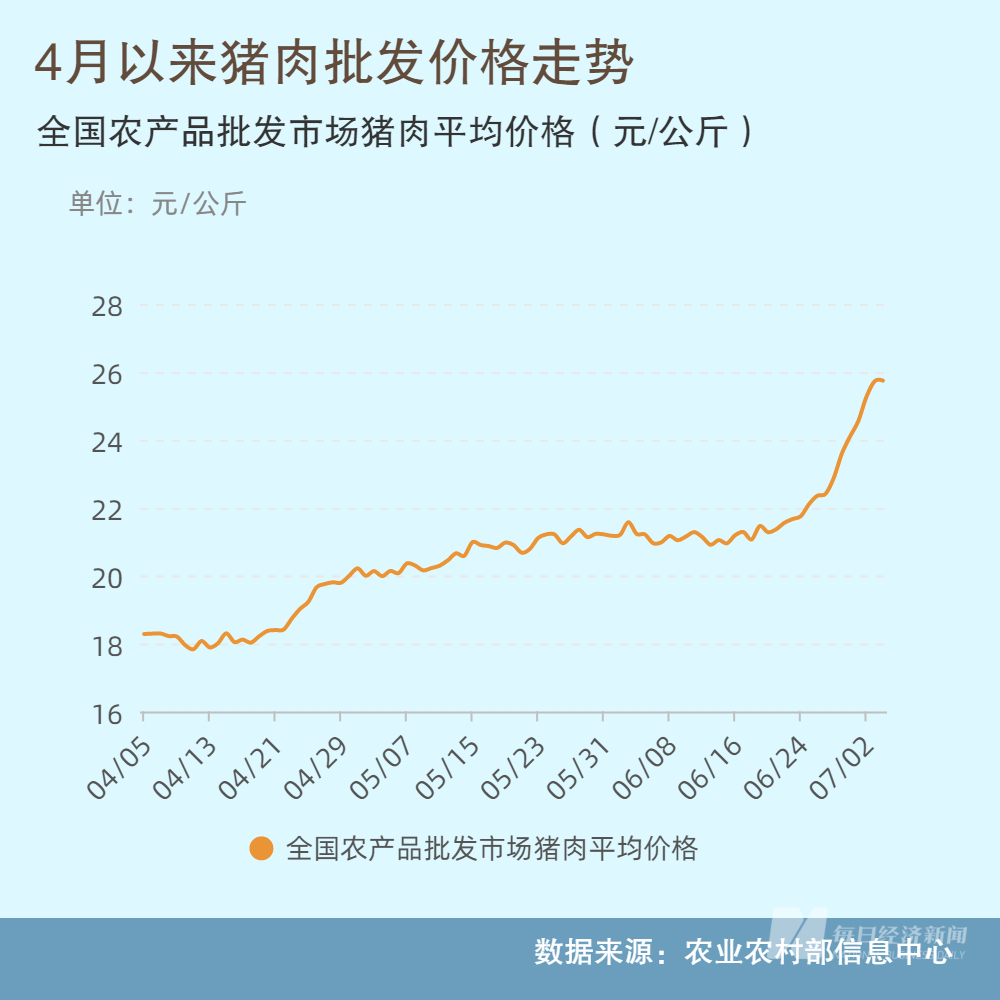
After a year and a half downlink cycle, the domestic pig market has regained its r...